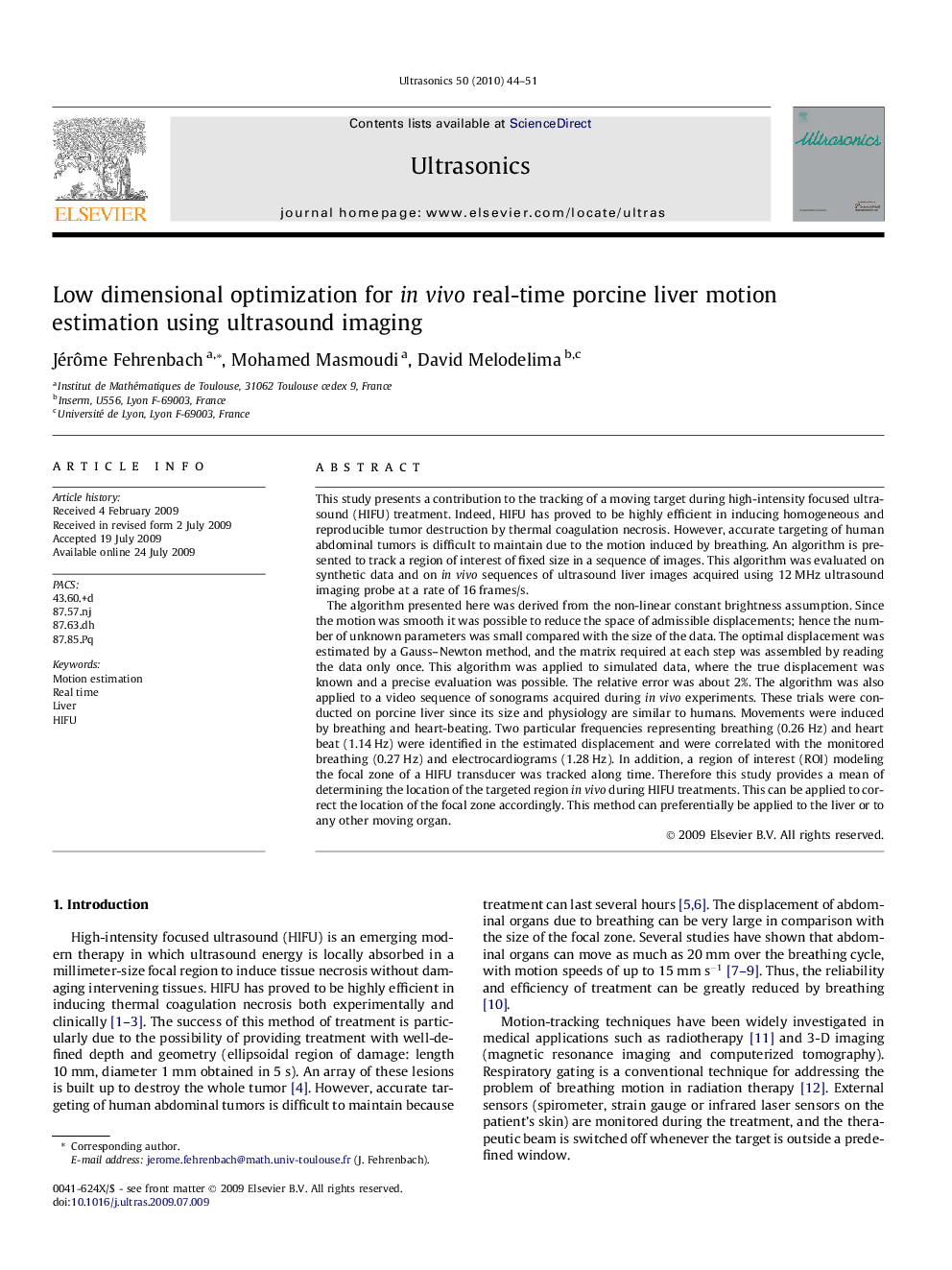| کد مقاله | کد نشریه | سال انتشار | مقاله انگلیسی | نسخه تمام متن |
|---|---|---|---|---|
| 1759857 | 1019302 | 2010 | 8 صفحه PDF | دانلود رایگان |

This study presents a contribution to the tracking of a moving target during high-intensity focused ultrasound (HIFU) treatment. Indeed, HIFU has proved to be highly efficient in inducing homogeneous and reproducible tumor destruction by thermal coagulation necrosis. However, accurate targeting of human abdominal tumors is difficult to maintain due to the motion induced by breathing. An algorithm is presented to track a region of interest of fixed size in a sequence of images. This algorithm was evaluated on synthetic data and on in vivo sequences of ultrasound liver images acquired using 12 MHz ultrasound imaging probe at a rate of 16 frames/s.The algorithm presented here was derived from the non-linear constant brightness assumption. Since the motion was smooth it was possible to reduce the space of admissible displacements; hence the number of unknown parameters was small compared with the size of the data. The optimal displacement was estimated by a Gauss–Newton method, and the matrix required at each step was assembled by reading the data only once. This algorithm was applied to simulated data, where the true displacement was known and a precise evaluation was possible. The relative error was about 2%. The algorithm was also applied to a video sequence of sonograms acquired during in vivo experiments. These trials were conducted on porcine liver since its size and physiology are similar to humans. Movements were induced by breathing and heart-beating. Two particular frequencies representing breathing (0.26 Hz) and heart beat (1.14 Hz) were identified in the estimated displacement and were correlated with the monitored breathing (0.27 Hz) and electrocardiograms (1.28 Hz). In addition, a region of interest (ROI) modeling the focal zone of a HIFU transducer was tracked along time. Therefore this study provides a mean of determining the location of the targeted region in vivo during HIFU treatments. This can be applied to correct the location of the focal zone accordingly. This method can preferentially be applied to the liver or to any other moving organ.
Journal: Ultrasonics - Volume 50, Issue 1, January 2010, Pages 44–51